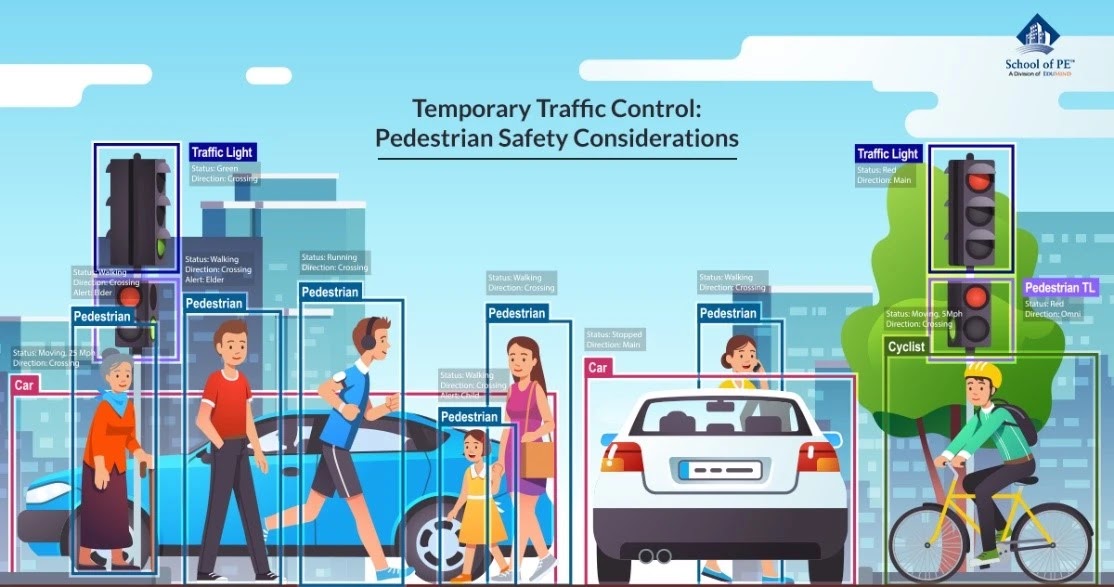The primary function of temporary traffic control is to provide road users guidance through construction, maintenance, utility, and incident zones. Road users include bicyclists, pedestrians, and vehicles (passenger cars, trucks, buses, and RVs). Part 6D of the 2009 Manual of Uniform Traffic Control Devices (MUTCD) provides guidance for pedestrian safety.
Pedestrians need a clearly delineated, usable travel path for safe passage through temporary work zones. The pedestrian population varies from the young, elderly, and people with hearing and visual disabilities, so careful considerations must be given to pedestrian safety. The design of pedestrian facilities in temporary traffic control zones is dependent on the geographic location and proximity of the roadway to other important landmarks including parks, schools, medical facilities, etc. Access to crosswalks, sidewalks, and walkways must be provided.
Pedestrians often utilize the shortest path possible and are reluctant to retrace their steps or add distance for out-of-the-way travel to their destination. Three guidelines listed in the 2009 MUTCD are considered when planning for pedestrians in temporary work zones.
- Pedestrians should not be led into conflicts with vehicles, equipment, and operations.
- Pedestrians should not be led into conflicts with vehicles moving though or around the worksite.
- Pedestrians should be provided with a convenient and accessible path that replicates as nearly as practical the most desirable characteristics of the existing sidewalk(s) or footpath(s).
Every effort should be made to separate pedestrian movement from worksite and vehicular activity. If an acceptable route cannot be created for pedestrians to pass through, an alternate route must be created. Figures 6H-28 and 6H-29 in the MUTCD provide guidance on design. Pedestrians should be directed with advanced warning signs at intersections in urban and suburban areas that encourage them to cross to the opposite side of the roadway. The 2009 MUTCD also gives guidance on accommodation for pedestrians with disabilities. Some of these considerations are as follows:
- Ensure that continued access is provided for pedestrians.
- Maintain access to transit stops.
- Provide a smooth, continuous hard surface throughout the pedestrian facility. There should be no abrupt changes in the grade or terrain that could cause tripping hazards or present a barrier for wheelchairs. The geometry should comply with ADA (Americans with Disabilities) requirements.
- Maintain the width of the existing facility or maintain a minimum of 60 inches width throughout the temporary traffic control zone. Provide a 60 * 60-inch passing space at least every 200 feet.

In addition to warning signs, longitudinal channelizing devices such as jersey barriers, temporary barrier walls, or chain link fencing are used to delineate the pedestrian path. These discourage pedestrians from unauthorized movements into the workspace and potential conflicts with vehicular traffic. Devices that do not comply and are not considered detectable include tape, rope, or plastic chain strung between devices. If an adequate plan cannot be developed, closing the worksite to pedestrians is also an option. The use of Type II and Type III barricades with regulatory signs can be used to restrict access.
No comments :
Post a Comment